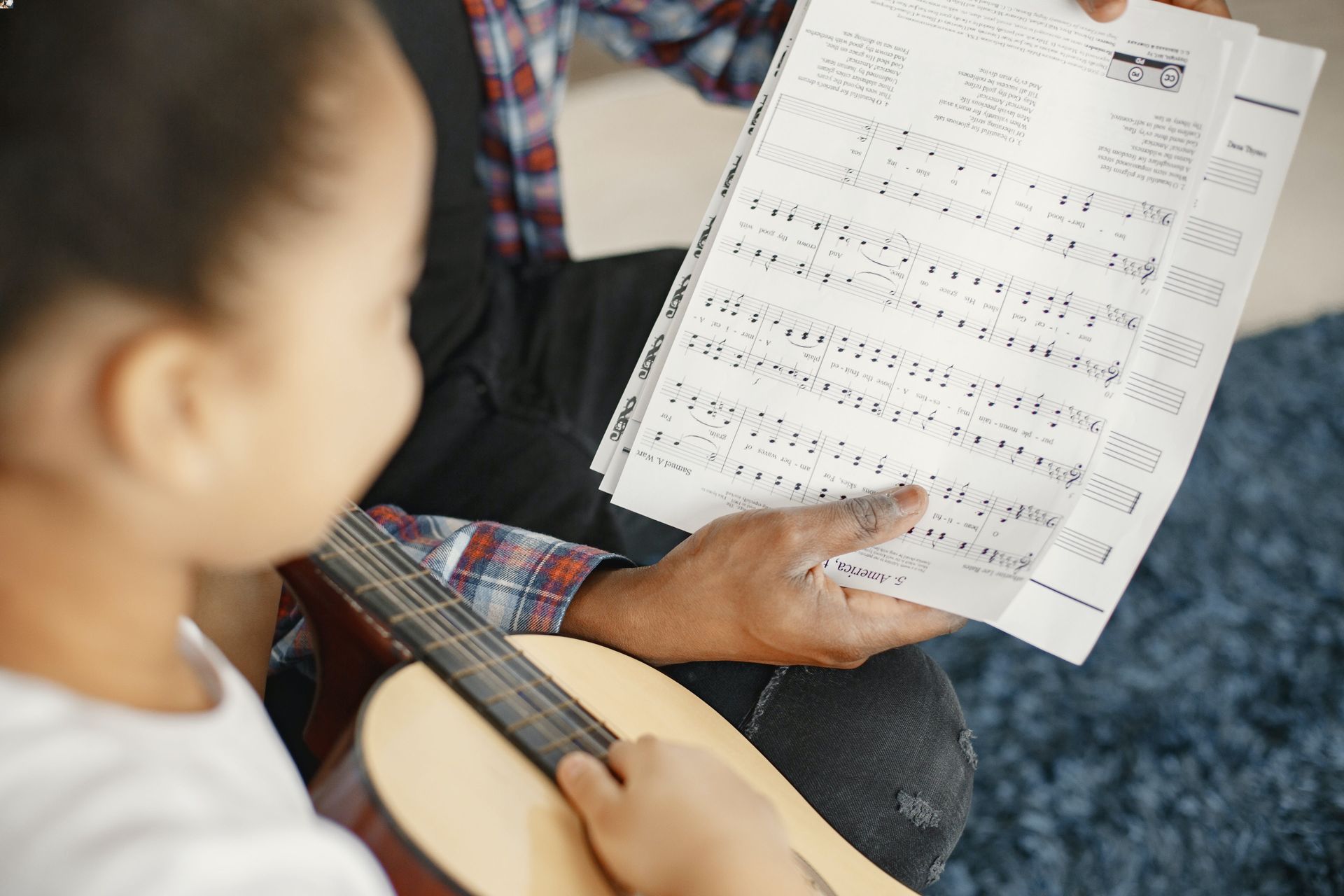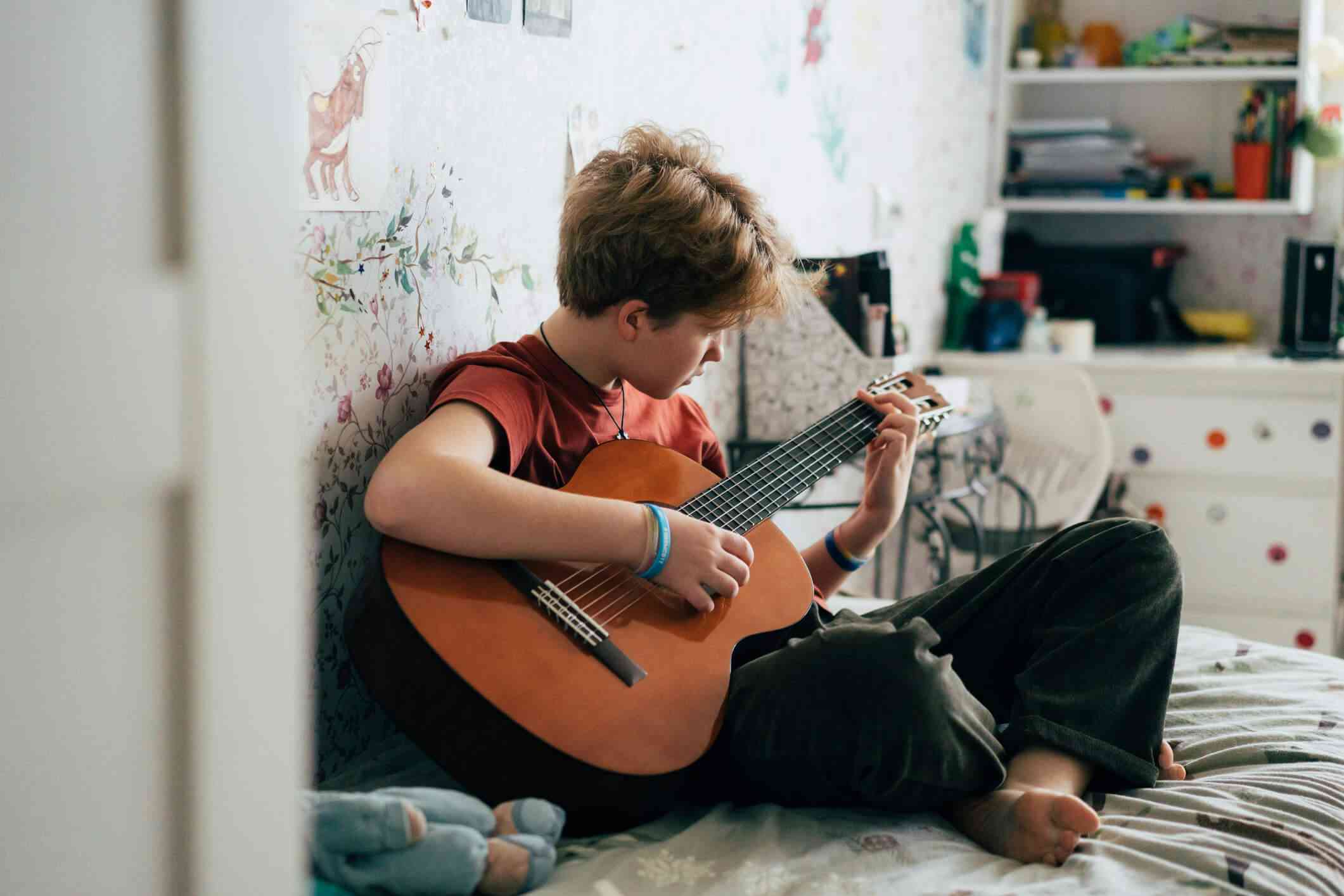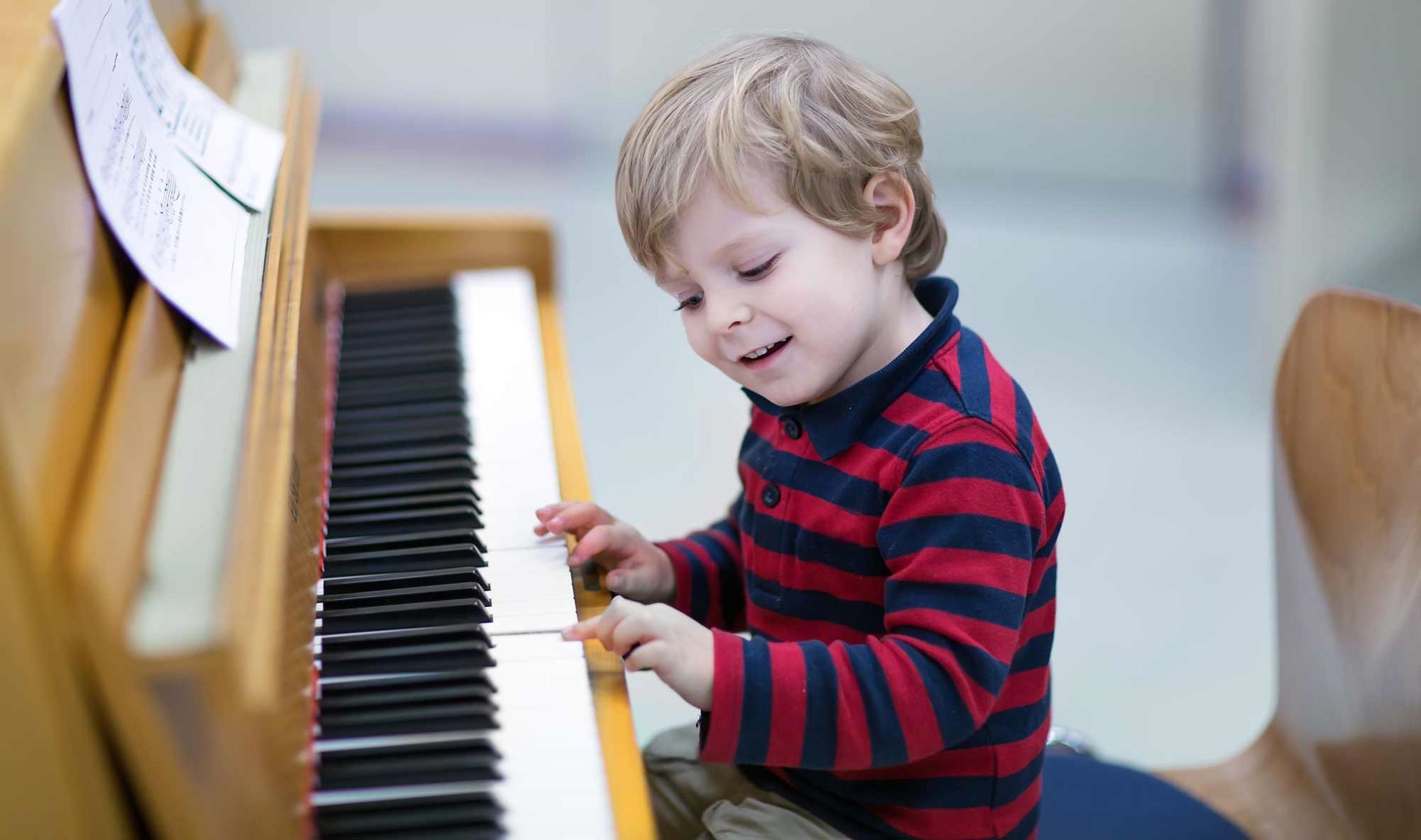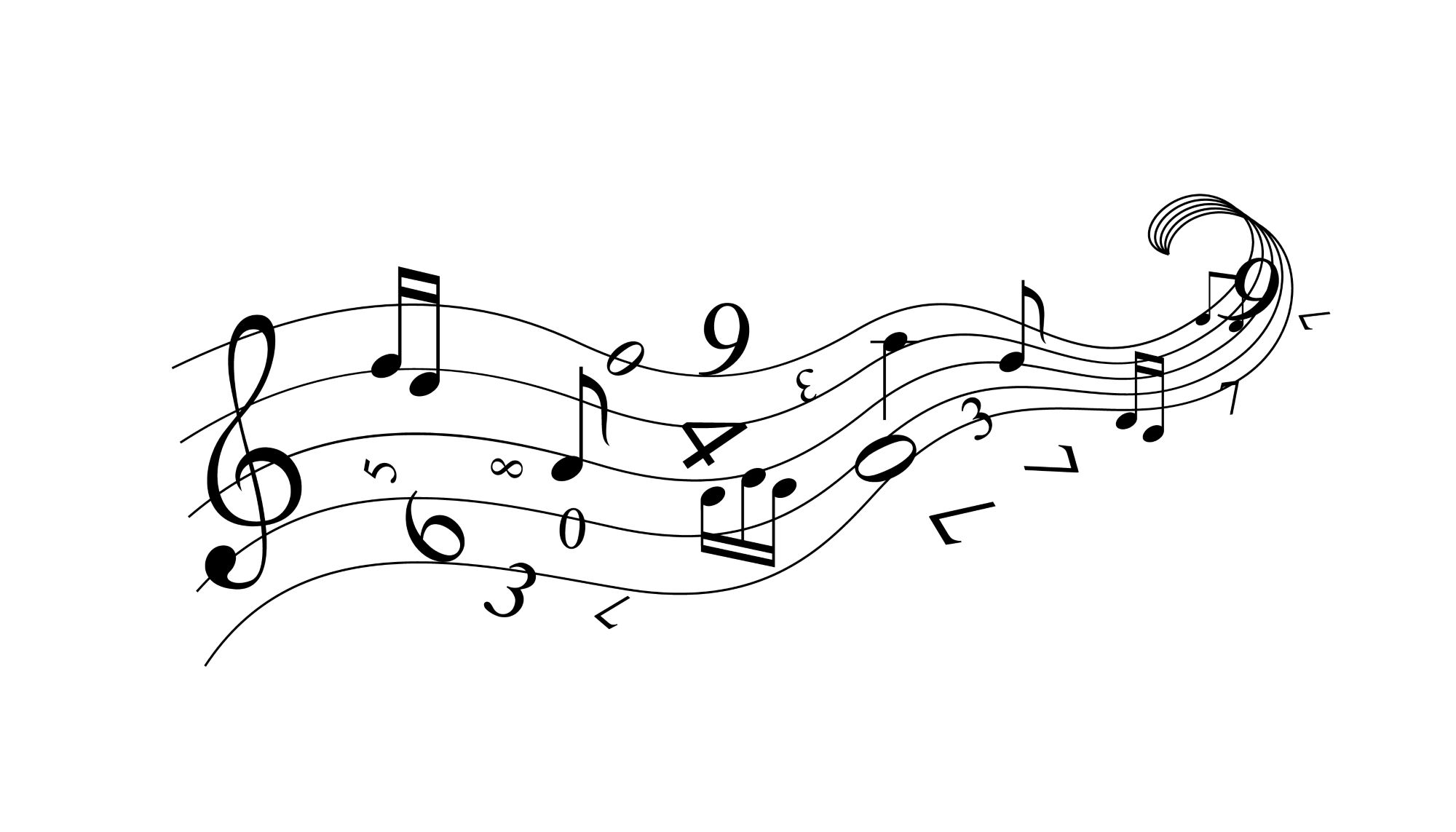Home>Events & Info>Note>How To Help Kids Remember Music Note


Note
How To Help Kids Remember Music Note
Modified: January 22, 2024
Help your kids remember music notes with these effective tips and techniques. Teach them the importance of note recognition for their musical growth and development.
(Many of the links in this article redirect to a specific reviewed product. Your purchase of these products through affiliate links helps to generate commission for AudioLover.com, at no extra cost. Learn more)
Table of Contents
Introduction
Learning to read and remember music notes can be a challenging task for kids, especially those who are just starting their musical journey. However, with the right strategies and techniques, parents and teachers can help kids develop a strong foundation in music notation.
Understanding music notes is essential since it forms the basis of reading sheet music and playing a musical instrument. By grasping the fundamentals of music notes, children can enhance their ability to play melodies, chords, and rhythms accurately.
In this article, we will explore various methods that can assist in improving kids’ ability to remember music notes. From mnemonic devices to engaging musical activities, regular practice, and the use of technology, we will provide a comprehensive guide to help kids on their journey to becoming proficient in reading and playing music.
Whether you are a parent or a music educator, implementing these strategies can greatly enhance a child’s musical aptitude and instill a lifelong love for music.
Understanding the Basics of Music Notes
Before we delve into the techniques to help kids remember music notes, it is important to have a solid understanding of the basics. Music notes are symbols used to represent the pitch and duration of a sound.
The staff is the foundation of music notation, consisting of horizontal lines and spaces. Each line and space represents a different note. The notes are represented by oval shapes placed on the lines or in between them. The position of the note on the staff determines its pitch.
The notes are named using the letters A to G. These letters are repeated as the pitch goes higher or lower. For example, the lowest line on the staff represents the note E, while the space above it represents the note F, and so on.
In addition to the pitch, music notes also have different durations. Common note durations include whole notes, half notes, quarter notes, and eighth notes. The duration is represented by the shape of the note, such as a solid oval for a whole note and a filled-in oval with a stem for a quarter note.
To help kids grasp the basics of music notes, it can be beneficial to create a visual representation of the staff and notes. This can be done using a whiteboard, a large piece of paper, or even an interactive music app.
Engaging kids in interactive exercises to identify and name different notes on the staff can also be beneficial. This can be done through fun games, quizzes, or even using flashcards.
By ensuring that children have a strong foundation in understanding the basics of music notes, they will be well-equipped to progress in their musical journey.
Creating Mnemonic Devices
Mnemonic devices are memory aids that can help kids remember and associate music notes with something else. These devices can be in the form of words, phrases, or visual cues that assist in recalling the notes accurately.
One popular mnemonic device for remembering the notes on the lines of the staff is the phrase “Every Good Boy Does Fine.” Each word in this phrase represents the first letter of a specific note: E for the bottom line, G for the second line, B for the third line, D for the fourth line, and F for the top line.
A similar mnemonic can be used to remember the notes on the spaces of the staff. The phrase “FACE” represents the notes F, A, C, and E.
For kids who are more visually inclined, creating visual mnemonics can be helpful. For example, drawing a smiley face or a small picture on the lines or spaces corresponding to specific notes can serve as a visual cue to remember the pitch.
It’s important to note that mnemonic devices should be tailored to each child’s learning style and preferences. Encourage kids to create their own mnemonics that resonate with them, as this will make the association more personal and memorable.
Additionally, incorporating mnemonics into fun and interactive activities can make the learning process more engaging. For example, you can create a game where kids match specific notes with their corresponding mnemonic, or compose short melodies using these notes and mnemonics.
Mnemonic devices are powerful tools that can significantly aid kids in remembering music notes. By creating personalized and creative mnemonics, children can develop a strong connection between the notes and their mnemonic cues, making it easier for them to recall the correct notes when reading sheet music or playing their instrument.
Engaging in Musical Activities
Engaging kids in musical activities is a fun and effective way to help them remember music notes. By incorporating games, exercises, and interactive sessions, children can develop a deeper understanding of music and strengthen their note recognition skills.
One activity that can be helpful is singing or playing simple melodies using the notes they are learning. This allows kids to hear the relationship between different notes and reinforces their understanding of pitch and rhythm. Encourage them to play these melodies on an instrument or sing along while reading the corresponding notes on the staff.
Another engaging activity is creating rhythm patterns using rhythm cards or clapping exercises. By focusing on the rhythm aspect of music, children develop a better sense of timing and can start to associate specific note values with their corresponding durations.
Incorporating movement and dance into musical activities can also enhance note recognition. You can create a game where kids move and stop at different positions corresponding to certain notes on the staff. This kinesthetic approach helps reinforce the visual and spatial aspects of music notation.
Listening to a wide variety of music styles and genres is another beneficial activity. By exposing kids to different melodies, rhythms, and harmonies, they develop a broader musical vocabulary and become more familiar with the range of notes used in different compositions.
Additionally, involving kids in group music activities, such as joining a children’s choir, orchestra, or ensemble, provides them with opportunities to practice reading and playing music with others. Collaborative experiences enable children to reinforce their note recognition skills while also learning the importance of teamwork and musical communication.
Engaging in musical activities not only helps kids remember music notes but also enhances their overall musicality and enjoyment of the art form. By making the learning process interactive, enjoyable, and tailored to each child’s interests and abilities, you can facilitate a deeper connection to music and note recognition.
Practicing Regularly
Regular practice is key to any skill development, and learning to remember music notes is no exception. Consistent practice allows kids to reinforce their knowledge and familiarity with music notation, ultimately improving their ability to remember and recognize notes quickly.
Set aside dedicated practice time each day for kids to focus on music note memorization. Encourage them to spend a few minutes each day reviewing the notes they have learned so far and identifying them on the staff. Consistency is key in building a solid foundation in note recognition.
During practice sessions, provide kids with various exercises and drills to reinforce their note recognition skills. For example, you can create flashcards with different notes on them and ask children to name the note as quickly as possible. Increase the difficulty level over time by using a wider range of notes and mixing them up to challenge their memory.
Integrating note recognition into their regular instrument practice is also important. As kids learn to play different pieces of music, encourage them to identify the notes they are playing by reading the sheet music. This hands-on approach to note recognition helps children make the connection between the written notes and their physical execution on their instrument.
Make the practice sessions engaging and interactive by incorporating games or rewards. For example, you can create a scoring system or provide small incentives for correctly identifying a certain number of notes within a given time. This adds an element of excitement and motivation to their practice routine.
Ensure that practice sessions are not overly long or monotonous. Learning music should be enjoyable, so incorporate breaks, encourage creativity, and allow kids to explore their musical interests during practice time. This helps maintain their enthusiasm and keeps them motivated to continue improving their note recognition skills.
Remember, practice makes perfect. The more kids practice recognizing music notes, the more familiar they become with the symbols and patterns, leading to faster and more accurate recognition. Consistent and dedicated practice is the key to mastering note memorization.
Incorporating Music Note Flashcards
Music note flashcards are a valuable tool for helping kids remember music notes. Flashcards provide a visual and interactive way to reinforce note recognition skills and can be easily incorporated into a child’s learning routine.
The first step is to create or obtain a set of flashcards that display different music notes on one side and their corresponding names on the other. You can either make physical flashcards using cardstock or utilize digital flashcards on a smartphone, tablet, or computer.
Start by introducing a few flashcards at a time, focusing on specific notes or sets of notes. Show the flashcard to the child, and have them identify the note and say its name. Repeat this process frequently to reinforce their memory of the notes.
You can make the flashcard sessions more engaging by turning them into a game. For example, you can time the child to see how quickly they can correctly identify the notes, or create friendly competitions with points or rewards for correct answers.
As the child becomes more proficient, gradually introduce new flashcards with additional notes. Mix up the flashcards to provide a challenge and help them generalize their note recognition skills across different contexts.
To further enhance the effectiveness of flashcards, incorporate different learning techniques. For example, you can ask the child to play the note on their instrument when they see the flashcard, or to sing a song that incorporates the note they have just identified.
Regular and consistent use of music note flashcards during practice sessions will improve a child’s ability to quickly identify and remember the notes. Over time, they will become more confident in reading sheet music and playing their instrument.
Remember to keep the flashcard sessions short and engaging to avoid overwhelming the child. Flashcards are meant to be a tool to assist in the learning process, not a tedious task. Make the experience interactive and enjoyable, and always provide positive reinforcement and encouragement.
Incorporating music note flashcards into a child’s learning routine is an effective way to reinforce note recognition skills and improve their ability to read and understand sheet music. With consistent practice and exposure to flashcards, children will develop a solid foundation in music notation that will benefit them as they progress in their musical journey.
Using Technology and Online Resources
In the digital age, technology and online resources offer a wealth of opportunities to enhance the learning experience for children. When it comes to helping kids remember music notes, there are numerous technological tools and online resources that can be utilized.
One option is to use music education apps and software specifically designed to teach note recognition. These interactive tools provide a fun and engaging way for kids to practice identifying and naming music notes. They often include features such as games, quizzes, and progress tracking, making the learning process more enjoyable and rewarding.
Online tutorials and video lessons can also be valuable resources. Many websites and platforms offer free or paid tutorials where kids can watch and learn about music notes. These tutorials often include visual demonstrations, explanations, and practice exercises to reinforce note recognition skills.
Virtual quizzes and note identification games are another engaging way to utilize technology. Websites and apps provide interactive quizzes where children can test their knowledge of music notes and receive instant feedback. Some platforms even offer multiplayer games, allowing kids to compete with friends or other users from around the world.
Additionally, online platforms and websites provide access to digital sheet music libraries. These resources allow kids to practice reading music directly from their devices, providing instant feedback on their accuracy and proficiency in note recognition.
Another innovative technology to consider is the use of digital keyboards or pianos with built-in LED lights. These instruments have illuminated keys that correspond to specific notes, making it easier for children to see the relationship between sheet music and key placement. As they play along, the illuminated keys serve as a visual guide for note recognition.
When using technology and online resources, it’s important to ensure a healthy balance. Supplementing traditional learning methods with technology can be highly beneficial, but it should not replace personal interaction, guidance, and hands-on practice with a physical instrument.
Overall, technology and online resources offer a wide range of tools and platforms to assist in helping kids remember music notes. By incorporating these resources into a child’s learning routine, parents and teachers can create an engaging and interactive environment that fosters note recognition skills and musical development.
Seeking Professional Guidance
When it comes to helping kids remember music notes, seeking professional guidance can be immensely beneficial. Music teachers and private instructors have the expertise and experience to provide tailored instruction and guidance to help children master music notation.
A qualified music teacher can assess a child’s current level of note recognition and develop a personalized plan for improvement. They can identify any weaknesses or areas that need particular attention and provide targeted exercises and practice techniques.
Music teachers can also introduce structured lessons and curriculum that gradually build upon a child’s note recognition skills. With their guidance, children can progress from simple exercises to more complex music pieces, reinforcing their understanding of music notation along the way.
In addition to individual or group lessons, music teachers can offer valuable insights and strategies for parents to use at home. They can recommend specific resources, books, or apps that can assist in helping kids remember music notes.
For children who are truly passionate about music or are considering pursuing music as a career, seeking professional guidance becomes even more essential. Music instructors can provide expert guidance on note recognition, sight-reading, and other important skills necessary for success in music performance or composition.
Furthermore, music teachers offer a supportive environment for children to ask questions, clarify concepts, and seek feedback. They provide constructive criticism and encouragement, fostering a positive learning experience that nurtures a child’s musical growth.
It’s important to choose a reputable and qualified music teacher who specializes in the instrument or style of music that your child is interested in. A good teacher-student relationship is crucial for effective guidance and learning.
Whether through private lessons, group classes, or online instruction, seeking professional guidance can significantly accelerate a child’s progress in note recognition. The expertise, personalized instruction, and mentorship provided by music teachers can make a world of difference in a child’s musical journey.
Conclusion
Learning to remember music notes is a fundamental skill for any aspiring musician, and with the right strategies and techniques, kids can develop a strong foundation in music notation. From understanding the basics of music notes to incorporating mnemonic devices, engaging in musical activities, practicing regularly, using flashcards, and leveraging technology and professional guidance, there are various approaches that can help children on their journey to mastering note recognition.
By providing a solid understanding of the basics of music notes, children can begin to grasp the complexities of reading sheet music and playing their instrument with accuracy. Creating mnemonic devices tailored to their learning style can assist in making note recognition more memorable and enjoyable. Engaging in musical activities, such as singing, playing melodies, and creating rhythm patterns, helps reinforce note recognition skills in a practical and interactive way.
Consistent practicing is essential in developing a strong foundation in note recognition. Regular practice sessions, incorporating note recognition exercises, flashcards, and instrument playing, can help children become more confident in identifying and remembering music notes.
Incorporating music note flashcards into the learning routine provides a visual and interactive tool that boosts note recognition skills. Technology and online resources, such as music education apps, tutorials, and online quizzes, offer additional avenues to engage children in learning music notes.
Seeking professional guidance, whether through music teachers or private instructors, offers personalized instruction, structured lessons, and valuable feedback to help kids progress in their note recognition abilities. Music teachers can provide guidance and support, ensuring that children receive the necessary tools and guidance to succeed in their musical journey.
In conclusion, helping kids remember music notes requires a combination of creativity, practice, engagement, and support. By incorporating these strategies and techniques into their learning routine, parents and educators can empower children with the necessary skills to read and interpret music notation. Remember, patience, encouragement, and a passion for music are key ingredients in nurturing a child’s musical growth. With dedication and the right approach, children can develop a lifelong enjoyment and appreciation for the art of music.











